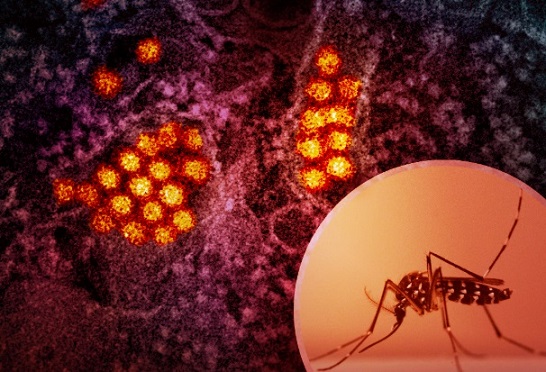Nikhil Prasad Fact checked by:Thailand Medical News Team Jan 05, 2025 11 months, 3 weeks, 1 day, 1 hour, 18 minutes ago
Medical News: Dengue fever remains a significant global health challenge, particularly in tropical and subtropical regions. The disease, caused by the dengue virus (DENV), affects millions annually and has the potential to progress to severe forms, characterized by complications such as hypotension and hemorrhaging. Recent research led by Anyela Lozano-Parra and colleagues from the Universidad Industrial de Santander and the Centro de Diagnóstico de Enfermedades Infecciosas in Colombia sheds new light on the role of antioxidants in predicting these complications. This
Medical News report delves into their findings, offering an accessible exploration of how oxidative stress may hold the key to early prognostic tools for dengue.
 Antioxidants and the Future of Dengue Care
Understanding the Role of Antioxidants in Dengue
Antioxidants and the Future of Dengue Care
Understanding the Role of Antioxidants in Dengue
The body’s natural response to infections involves the production of reactive oxygen species (ROS), which are molecules that can damage cells if not regulated. Antioxidants such as superoxide dismutase (SOD) and glutathione peroxidase (GPx) act as counterbalances, neutralizing ROS and preventing cellular damage. When this balance is disrupted, oxidative stress occurs, potentially exacerbating dengue’s severity. Researchers have long suspected a connection between oxidative stress and severe dengue, but evidence remained inconclusive until now.
The Colombian Study
Researchers conducted a nested case-control study involving 132 patients diagnosed with dengue in five Colombian cities. The study aimed to identify whether biomarkers of oxidative stress could predict the likelihood of developing severe complications such as hypotension or hemorrhaging. This approach, focusing on patients’ antioxidant responses, offers a new avenue for improving early dengue care.
Participants were recruited within 96 hours of symptom onset, with blood samples collected to measure levels of total antioxidant status (TAS), SOD, and GPx. Cases included patients who developed complications, while controls did not experience such outcomes. The study’s design ensured robust results, minimizing selection bias and providing valuable insights.
Key Findings
The study revealed intriguing patterns in antioxidant biomarkers:
-Elevated TAS and SOD Levels: Patients who developed complications exhibited higher TAS and SOD levels compared to controls. TAS levels were observed at 2.1 mM in cases versus 1.7 mM in controls, while SOD levels were 6.7 U/mL in cases versus 6.0 U/mL in controls.
-Glutathione Peroxidase (GPx): GPx levels, in contrast, were slightly lower in cases than controls but did not show a statistically significant association with complications.
Further analysis highlighted a nonlinear relationship. TAS levels below 3.5 mM and SOD levels below 8.0 U/mL correlated with an increased likelihood of complications. However, higher levels beyond these thresholds appeared unrela
ted to outcomes, suggesting that early antioxidant responses might indicate the body’s attempts to combat oxidative stress during the acute phase of dengue.
Implications for Prognostic Tools
These findings are particularly promising for the development of prognostic tools. Measuring TAS and SOD levels early in dengue infection could help identify patients at higher risk of severe outcomes. This early detection allows for closer monitoring and timely interventions, potentially saving lives.
Study Strengths and Limitations
The Colombian research team’s work stands out due to its methodological rigor. By prospectively following patients and ensuring blinded assessment of outcomes, the study minimized bias and enhanced reliability. However, certain limitations remain. For instance, the study did not determine the specific dengue serotype, which may influence antioxidant responses. Additionally, while GPx did not show a significant association, further research could explore its role in more detail.
Conclusions
This research underscores the critical role of oxidative stress in dengue progression. The findings suggest that TAS and SOD concentrations measured within the first days of infection could serve as valuable biomarkers for predicting severe dengue complications. By incorporating these biomarkers into clinical practice, healthcare providers can enhance patient outcomes through targeted care and early intervention.
The study findings were published in the peer-reviewed journal: Tropical Medicine and Infectious Disease.
https://www.mdpi.com/2414-6366/10/1/14
For the latest Dengue News, keep on logging to Thailand
Medical News.
Read Also:
https://www.thailandmedical.news/news/indian-study-discovers-that-dengue-alters-cd154-and-cd148-expression-in-human-platelets
https://www.thailandmedical.news/news/how-dengue-virus-impacts-macrophages-and-triggers-inflammatory-cell-death
https://www.thailandmedical.news/articles/dengue-news
